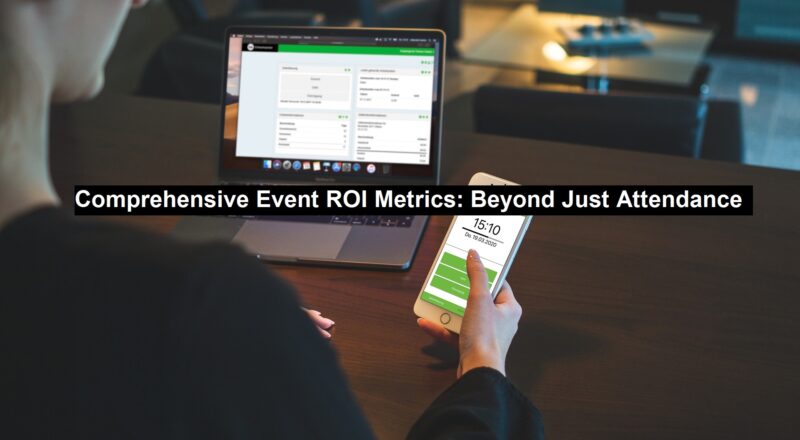To truly understand the success of a conference, trade show, or any large-scale event, you must measure more than just attendance numbers. In today’s fast-paced market, businesses need a broader view to determine whether an event met its objectives. Below, we’ll explore several key areas — including engagement, financial outcomes, and long-term benefits — that provide a comprehensive approach to assessing and maximizing event ROI.
Before the event even begins, the metrics you track can reveal potential success. For instance, analyzing your marketing reach through social media impressions, email open rates, and click-through rates gives you an idea of audience interest. Essential ERP features like project management and expense tracking can provide valuable data for calculating event ROI metrics. Additionally, reviewing registration data — such as the number of attendees and their demographic profiles — helps ensure that the event content and experience are tailored to meet your audience’s needs.
Read: The Career Advantages of Training and Certification with IBM, VMware, and AWS
During the event, the focus should shift to real-time engagement. Monitoring attendee participation in sessions, Q&A activities, polls, and social media interactions offers direct feedback on engagement levels. Investing in security awareness training can significantly reduce the risk of cyberattacks and improve an organization’s overall event ROI metrics. You can also assess how attendees are consuming content, such as downloading materials or watching live and recorded sessions, to better understand their interests.
Post-event analysis provides the clearest insight into ROI. Survey feedback and the Net Promoter Score® (NPS) offer a direct look at attendee satisfaction and areas for improvement. Monitoring post-event engagement, such as on-demand content views and continued social media activity, provides further data on the event’s long-term influence.
Financial success is another critical factor. By comparing revenue from ticket sales and sponsorships against costs, you can evaluate the event’s profitability. Keeping an eye on cost per attendee and managing expenses carefully ensures that financial outcomes align with business goals.
Networking results also offer insight into an event’s success. Tracking the number of meetings held with prospects and customers, as well as follow-up meetings scheduled post-event, reveals the event’s role in fostering valuable business relationships.
Brand visibility is another essential metric. Measuring media coverage, social media engagement, and positive feedback builds a picture of how the event increased brand awareness and loyalty. These elements contribute to long-term brand reputation and perception.
Finally, don’t forget to consider the long-term impact of the event. Metrics like qualified leads, conversion rates, repeat attendees, and increased customer lifetime value provide a complete picture of the event’s contribution to long-term business objectives. CRM processes can track attendee interactions and engagement metrics to accurately measure the ROI of events.
For marketers, using advanced technology is essential for collecting, analyzing, and presenting event data. Unified event marketing platforms streamline this process, making it easier to evaluate ROI and demonstrate event success to stakeholders.
Comprehensive-Event-ROI-MetricsTo learn more about how technology is improving the way event data is interpreted, please continue reading on to the infographic accompanying this post, provided by RainFocus.
